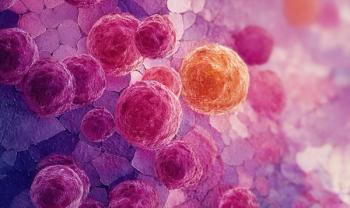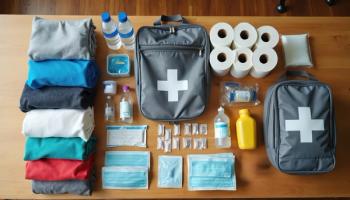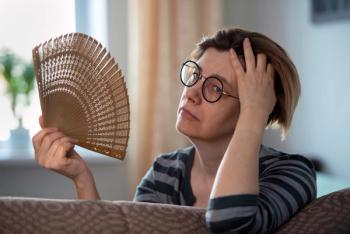
Pharmacy Practice in Focus: Health Systems
- July 2020
- Volume 9
- Issue 4
CAR-NK Cell Immunotherapy Shows Promise
Patients with relapsed or refractory lymphomas may benefit from CAR-NK cell immunotherapy and Have fewer adverse events.
In 2020, there will be an estimated 1.8 million new cases of malignancies, with nearly 606,520 deaths attributed to cancer in the United States.
Hematological cancers are expected to account for about 10% of oncological deaths this year. Patients with relapsed or refractory leukemia and lymphomas generally have a grim prognosis, which has paved the way for immunotherapy treatments. Lymphomas are projected to be responsible for about 37% of hematological deaths in 2020, making them an area of intense interest for antitumor immunotherapy treatment investigation (Figure 1).1-3
Who Is a Candidate?
Patients with lymphomas are treated with a combination of chemotherapy, radiotherapy, and/or surgery. Immunotherapy is reserved for patients experiencing relapsed or refractory malignancies. Patients with suspected relapsed or refractory cancers are reevaluated with positron emission tomography to detect abnormal cells. Next, they undergo a biopsy and are restaged before establishing a plan of action.4 Patients who have unsuccessfully undergone 2 or more lines of conventional chemotherapy are potential candidates for immunotherapy.5,6
Chimeric Antigen Receptor T-Cell Therapy
T cells (T lymphocytes) recognize antigens presented by the major histocompatibility complex I (MHC I) and elicit an immune response destroying the target cells. The MHC displays the foreign molecule on the cell surface for the T cell to recognize and release cytokines for cell lysis (Figure 2).7 Tumor cells are becoming increasingly advanced, invoking a downregulation antigen presentation via the MHC-I, allowing for metastasis to occur undetected by T cells.7,8
Engineering immune cells to target specific cancer cells in patients with relapsed or refractory malignancy has shown promise. Chimeric antigen receptors (CARs) are being used to amplify the response of T cells to recognize and destroy malignant cells. CAR T-cell therapy is a single treatment regimen in which T cells are removed from the body by leukapheresis and augmented and transduced with CARs targeting CD19. The proliferation of CAR T cells to elicit a response takes place in a laboratory before they are then infused back into the same patient.5,7 CD19 is a cell surface marker, identified by flow cytometry, expressed in many B-cell—refractory malignancies and thus has been a desirable target for engineered immunotherapy.8,9 Tisagenlecleucel (Kymriah) and axicabtagene ciloleucel (Yescarta) are 2 FDA-approved CD19-positive CAR T-cell immunotherapies that have shown success in patients with large B-cell lymphoma and relapsed or refractory leukemia, respectively.5 In phase 2 trials of axicabtagene ciloleucel therapy, the objective response rate was 82%, with a 54% complete response 1 month following infusion. The response rate was reevaluated about 15 months postinfusion, and continued response was still evident in 40% of patients who had previously experienced complete response. Overall, 93% of patients experienced some degree of cytokine release syndrome (CRS) within a 2-week period postinfusion.6 CRS is an inflammatory response in which overstimulation of the immune system can be life-threatening. Symptoms of CRS range from mild fever to severe multiorgan system failure. Neurotoxicity after administration of T-cell immunotherapy is also a concern requiring additional treatment for resolution of neurological symptoms.10 These adverse events (AEs) are taxing on an already immunocompromised patient, which has led to refining immunotherapy to decrease these occurrences.
CAR-Natural Killer Cell Therapy
Natural killer (NK) cells are part of the innate immune system, and their role is recognizing abnormal cells and destroying them using cytotoxic granules. Unlike T cells, NK cells do not require activation by antigen-presenting cells but are limited by signals within the immune system, thus, altering NK cells, which strengthens their antitumor response against abnormal cells.11,12 The use of NK cells is desirable, because they do not require provocation by MHC antigen presentation to destroy malignant cells.7,13 CAR-NK cell therapy has the potential to diminish severe AEs while increasing the body’s immune response against tumors that are otherwise exacerbated with use of T cells.10 Engineering NK cells from allogeneic umbilical cord blood has shown reduced risk in graft-versus-host disease and minimal cytotoxic effects.7,13 Clinical trial results support the engineering of CAR-NK cells in patients with relapsed or refractory leukemia and lymphomas expressing CD19-positive tumors.11,14 Eleven patients received allogeneic CAR-NK cells from umbilical cord blood and demonstrated a 73% response rate within 30 days after administration of therapy.11 All 11 exhibited no signs of CRS or neurotoxicity.11,14
Conclusion
Immunotherapy is reserved for patients experiencing relapsed or refractory malignancies after 2 or more failed chemotherapy treatments. CAR-NK cell immunotherapy has the potential to effectively treat patients with relapsed or refractory lymphomas while ameliorating AEs. Obtaining NK cells from allogeneic donors bypasses the need for activation through MHC I and the potential for CRS that has been seen with CAR T-cell immunotherapy. This process allows multiple patients to benefit from engineering a single sample of NK cells versus patient-specific samples requiring MHC activation with the use of T cells. It is discouraging to patients when multiple standard treatment regimens are unsuccessful. With this new advancement in therapy, targeting resistant malignant cells through engineering lymphocytes, such as NK cells with CARs, provides a glimmer of hope as we combat these malignancies.
Jerry A. Barbee Jr, PharmD, BCPS, CPh, and Glenn Schulman, PharmD, MS, BCPS, BCACP BCGP, BCIDP, are clinical pharmacists in Pensacola, Florida.Caitlyn Tompkins isa recent graduate of the Marshall University School of Pharmacy and is currently working as a pharmacy resident.
REFERENCES
- National Institutes of Health. Cancer of any site: cancer stat facts. National Cancer Institute. Accessed April 15, 2020. https://seer.cancer.gov/statfacts/html/all.html
- National Institutes of Health. Cancer stat facts: myeloma. National Cancer Institute. Accessed April 15, 2020. https://seer.cancer.gov/statfacts/html/mulmy.html
- National Institutes of Health. Hodgkin lymphoma. National Cancer Institute. Accessed June 12, 2020. https://seer.cancer.gov/statfacts/html/hodg.html
- Dada R. Diagnosis and management of follicular lymphoma: a comprehensive review. Eur J Haematol. 2019;103(3):152-163. doi:10.1111/ejh.13271
- National Institutes of Health. With FDA approval for advanced lymphoma, second CAR T-cell therapy moves to the clinic. National Cancer Institute. Published October 25, 2017. Accessed April 9, 2020. https://www.cancer.gov/news-events/cancer-currents-blog/2017/yescarta-fda-lymphoma
- Neelapu SS, Locke FL, Bartlett NL, et al. Axicabtagene ciloleucel CAR T-cell therapy in refractory large B-cell lymphoma. N Engl J Med. 2017;377(26):2531-2544. doi:10.1056/nejmoa1707447
- Pfefferle A, Huntington ND. You have got a fast CAR: chimeric antigen receptor NK cells in cancer therapy. Cancers. 2020;12(3):706. doi:10.3390/cancers12030706
- Bagashev A, Sotillo E, Tang CH, et al. CD19 alterations emerging after CD19-directed immunotherapy cause retention of the misfolded protein in the endoplasmic reticulum. Mol Cell Biol. 2018;38(21):e00383-18. doi:10.1128/MCB.00383-18
- Turtle CJ, Hanafi L-A, Berger C, et al. CD19 CAR-T cells of defined CD4:CD8 composition in adult B cell ALL patients. J Clin Invest. 2016;126(6):2123-2138. doi:10.1172/jci85309
- Shimabukuro-Vornhagen A, Gödel P, Subklewe M, et al. Cytokine release syndrome. J Immunother Cancer. 2018;6(1):56. doi:10.1186/s40425-018-0343-9
- Liu E, Marin D, Banerjee P, et al. Use of CAR-transduced natural killer cells in CD19-positive lymphoid tumors. N Engl J Med. 2020;382(6):545-553. doi:10.1056/nejmoa1910607
- Federici C, Shahaj E, Cecchetti S, et al. Natural-killer-derived extracellular vesicles: immune sensors and interactors. Front Immunol. 2020;11:262. doi:10.3389/fimmu.2020.00262
- Herrera L, Santos S, Vesga MA, et al. Adult peripheral blood and umbilical cord blood NK cells are good sources for effective CAR therapy against CD19 positive leukemic cells. Sci Rep. 2019;9(1):18729. doi:10.1038/s41598-019-55239-y
- Rezvani K. CD19 CAR NK-cell therapy in leukemia & lymphoma. Oncology Times. 2020;42(5):35. doi:10.1097/01.cot.0000657800.17693.79
Articles in this issue
over 5 years ago
HIV and Immunotherapy: The Immune System Awakensover 5 years ago
Prepare the Pharmacy for the Next Crisisover 5 years ago
Stay Up to Date on Alzheimer Researchover 5 years ago
Digital Tools Can Minimize Guessworkover 5 years ago
Supportive Care Is "Doing Something"Newsletter
Stay informed on drug updates, treatment guidelines, and pharmacy practice trends—subscribe to Pharmacy Times for weekly clinical insights.















































































































































































































